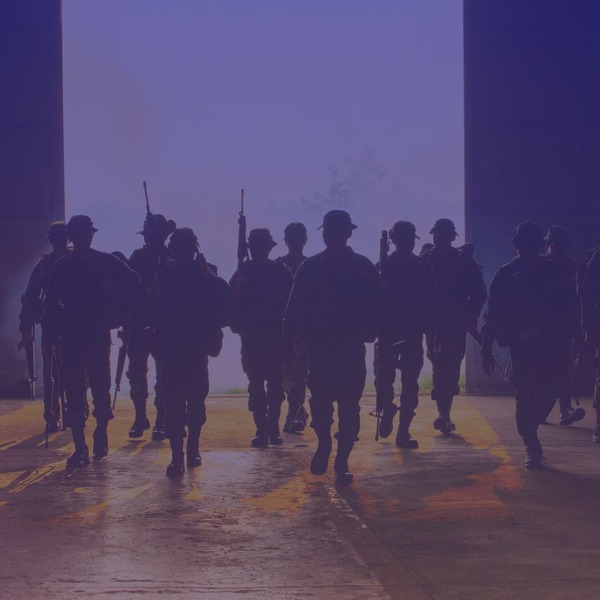
Written by Liz Morán
Human trafficking started ranking on the European security agenda in the 1990s, as the public and policymakers were concerned about illegal migration and the link between human trafficking and organised crime (Friesendorf, 2008). Since then, multiple efforts have been made to fight human trafficking: from implementing programs in Southeastern Europe (SEE) in the late 1990s, to the application of the “Nordic model” that punishes buyers of sexual services and decriminalises prostitution. In 2011, Directive 2011/36/EU was adopted by the European Union, promoting a victim-centred, gender and prevention approach (Brooks and Heaslip, 2019). Even scholars have come forward with innovative solutions. Friesendorf (2008), for instance, suggests a revindication for a balanced and networked security governance.
Despite these efforts, sex trafficking remains a serious crime in SEE and countries still struggle with reducing trafficking and offering victims protection and care (UNODC, 2022). As a result, sex trafficking continues to be a highly lucrative and a low-risk crime, with “yearly revenues of 14 billion euros” (Pressly, 2021). Understanding sex trafficking in Eastern Europe (EE), and the impact of war on enabling it, is of great importance as the media reports increasing cases of trafficking and sexual exploitation of Ukrainian refugees (Bauer-Babef, 2022). Therefore, this article aims to give a brief overview of the profile of the victims and traffickers, the recruitment methods, and the causes and enablers of trafficking in EE.
The victims
Research (Kootsra,1999; Vock and Nijboer, 2000) reveals that most Eastern European sex trafficking victims were women aged 18 to 25, unmarried and childless. Additionally, they relatively often came from dysfunctional families in which alcohol abuse, incest, mistreatment, and financial problems were present. Data on detected cases of human trafficking continue to show that women are the main target of traffickers and are primarily subjected to sexual exploitation (UNODC, 2022A). Furthermore, recent accounts of sex trafficking victims uncover that girls as young as 10 years old have already been exposed to trafficking in SEE (BBC, 2017). The latest report of the UNODC (2022B), indeed, recounted a change in the profile of the victims in SEE, with an increasing number of the victims being foreigners -irregular migrants, refugees, and asylum seekers– and children.
Some scholars have maintained that most trafficked women are sex workers rather than “coerced women”. For instance, Vock and Nijboer’s (2000) research asserts that “a large number of victims had already worked as a prostitute before and more than 50% knew that they would have to work in the sex industry”. Likewise, reports have concluded that most trafficking victims involved women who knew they were going to work in the sex industry but did not anticipate the work conditions (Brooks and Heaslip, 2019). In contrast, other accounts (Pressly, 2021; Grimely, 2016) tell the story of deceived women who are tricked by traffickers that promise to find them work in the West as carers or waitresses.
The traffickers
There is a gap between the perception of traffickers –middle-aged men, unknown to the victim, who deceive and traffic women into prostitution– and the real traffickers (Surtees, 2008). Indeed, traffickers are more diverse than often represented in the media and information campaigns. Female offenders, for instance, are seldom studied. However, Surtess (2008) points out that while in most SEE countries recruiters and traffickers were men, an increasing trend of female recruiters was observed. She highlights that in 2003, for instance, “49.1% of Moldovan victims were recruited by women, a number that increased in 2004 to 61.8%”. Nonetheless, while some of these women acted as unintentional recruiters who deceived and convinced their friends to work abroad with them, others were former or current trafficking victims obliged by their traffickers to return home and recruit more women. Moreover, some former victims either began identifying with their traffickers after an extended period of abuse or they desensitised to trafficking, thereby becoming recruiters themselves (Surtees, 2008).
Wijkman and Kleemans (2019) research corroborates Surtees’ early findings, further helping to deconstruct the traditional perception of men being the offenders in human trafficking and sexual exploitation and women being the victims or ignorant partners of traffickers. They note that “on a fairly regular basis, it happens that women who have been sexually exploited first, later join the criminal partnership and start to exploit other women themselves. Often a romantic relationship exists between the prostitute and one of the perpetrators”. In other cases, women have cited fear of their male co-offender or financial reasons. In their study they found that out of the convicted women studied, 94% had co-offenders, half worked in prostitution, and a minority of the women were victims of sexual exploitation themselves before they became perpetrators.
Regarding nationality, both Surtees (2008) and Wijkman and Kleemans (2019) coincide. Surtees notes that while there exist some trafficking groups formed completely by foreigners –such as Albanian criminal groups in Serbia–, most victims were recruited by someone of their own nationality. Likewise, Wijkman and Kleemans concluded that, in most cases, perpetrators and victims originated from the same region and country.
Furthermore, whereas the pyramidal and hierarchical model appears to have dominated in the past, the trend now seems to be loose network structures as traffickers turn to flexibility to adapt, survive, and maximise economic gains. Moreover, traffickers have also undergone a process of professionalisation, since they are treating victims in ways that could maximise profit (i.e., paying them small wages and granting victims better work conditions that potentially deter them to escape). This, altogether with their willingness to cooperate transnationally, increases the difficulty of anti-trafficking actors who do not always cooperate easily or effectively across borders (Surtees, 2008).
The recruitment
Hernández and Rudolph (2015) highlight that trafficking organisations prefer to recruit victims in lower-income countries, where the size of the vulnerable population is bigger, and exploit them in higher-income countries for greater profits. Moreover, they maintain that recruitment activities are more likely to be located between geographically closer countries due to lower logistical costs, or along well-established migratory and refugee routes. Indeed, Nikoliæ-Ristanoviæ (2003) noted that in the 1980s and 1990s the sex trafficking of Eastern European women became more attractive than that of Asian women due to shorter distances, expenses, and risks which resulted in bigger profits.
Surtees (2008) stresses that “forced recruitment, such as kidnapping, is now relatively uncommon; more often recruitment plays upon the individual’s desire to migrate and find well-paid work abroad. […] At recruitment, traffickers generally promise traditionally female service sector jobs […] [and are increasingly using contracts and legal documentation to deflect concerns about trafficking]”. Other scholars (Hernández and Rudolph, 2015; Friesendorf, 2008) also cite facades of legality, arguing that victims are more likely to be contacted by strangers or acquaintances through the offering of deceptive well-paid job opportunities rather than smuggling services.
In other instances, the “lover-boy scheme” method is used. In Albania 48.3% of the victims in 2004 were recruited through marriage and engagement promises (Surtees, 2008), thus ending up being trafficked by their “husbands” or “fiancés”. Grimley (2016) offers a similar picture. She recounts that in Romania traffickers prey on vulnerable girls by befriending them, promising love, and giving them affection to gain their trust before trafficking them.
Furthermore, the latest trends include the increased use of technology, as traffickers take advantage of social media and mobile applications to recruit victims (UNODC, 2022). For instance, Europol’s (2022) investigations have uncovered several suspicious online job and help offers targeting Ukrainian women. Indeed, NGOs and scholars have made warnings regarding the increasing use of the Internet to recruit victims. Williams and Muhammad (2021) note that human traffickers, disguised as modelling agencies, operate on the Internet and on the edge of legality to recruit and exploit victims. Likewise, mail-order brides are no longer recruited and ordered via mail, but via online dating sites and international marriage agencies. Others (Stop the Traffik, 2018; Reid and Fox, 2020) have also argued that human trafficking is shifting to the online sphere. In this sense, the anonymity offered by the Darknet has created a space for illicit vendors and clients, raising speculations regarding the use of the Darknet as an enabler of human trafficking. Still, the evidence rather suggests a marginal number of trafficking taking place on the dark web (Reid and Foix, 2020) and an apparent rejection of the Darknet community towards these illicit activities (Stop the Traffik, 2018).
The causes and enablers of sex trafficking
Some authors highlight the role of the sex tourism industry in sex trafficking (Brooks and Heaslip, 2019), while others (Tverdova, 2011; Nikoliæ-Ristanoviæ, 2003) point to cultural factors –romanticisation of prostitution and the sexual revolution–, corruption and lawlessness (Vreja, 2005; Nikoliæ-Ristanoviæ, 2003), or the opening of borders (Vreja, 2005; Kligman, 2005) to explain the success of sex trafficking. In the following lines, however, we will focus on the transition to a free-market economy and the impact of war to explain the causes of trafficking in EE.
Transition to a free-market economy and democracy
Ex-communist countries’ political and economic liberalisation created opportunities and economic uncertainties that produced demand and supply of sex workers in and from EE (Kligman, 2005). Moreover, it propitiated the space for secondary economic activities to blossom –trafficking in persons, drugs, arms, and organs. At the same time, the transition process weakened state institutions and made them vulnerable to corruption and increased criminality (Vreja, 2005).
Studies suggest a relation between trafficking patterns and economic decline (Kligman, 2005) while scholars (Nikoliæ-Ristanoviæ, 2003) have also suggested that economic hardships and uneven distribution of wealth are among the main generators of sex trafficking. Indeed, authors (Kligman, 2005; Vreja, 2005) note that the economic decline that followed the end of communism and the transition to a free-market economy caused poverty and decreased the quality of life. Moreover, both authors highlight the acute “feminisation of poverty” experienced in EE. Therefore, socio-economic changes in post-communist countries –unemployment and loss of previous social positions– played a relevant role in precipitating the involvement of individuals in trafficking as both traffickers –due to the possibility of high incomes– and victims –due to increased susceptibility to promises of a better life (Vreja, 2005; Nikoliæ-Ristanoviæ; 2003).
The impact of war
Kligman (2005) argues that wars have facilitated the trafficking of women, drugs, and arms under the alleged auspices of competing mafias and complicit officials. Moreover, she exposes how only within months of the North Atlantic Treaty Organisation’s (NATO) intervention in the Kosovo war a system of sex services flourished.
Nikoliæ-Ristanoviæ (2003) argues that war and militarism generate sex trafficking in several ways: unemployment, poverty, and lack of prospects influence both supply and demand for prostitution and trafficking. Moreover, post-war militarisation and the presence of large international organisations further contribute to the growth of sex trafficking. In this regard, both Nikoliæ-Ristanoviæ (2003) and Vreja (2005) expose the complicity of United Nations’ forces in sex trafficking.
Recently, the on-going war in Ukraine raised alerts of increased risks of trafficking and sexual exploitation of Ukrainian refugees, most of whom are women (UNHCR, 2022). The UNODC (2022A) reports that “evidence from conflicts shows that criminals profit from the chaos and desperation of war”. Moreover, further research by the organisation reveals that people fleeing conflict are vulnerable to becoming victims of trafficking as they are more easily deceived by fake travel arrangements and job offers. Indeed, the United Kingdom’s delegation to the Organization for Security and Co-operation in Europe (OSCE) stated that the Ukraine war has created an increased risk of human trafficking across Europe. The delegation noted that difficulties in accessing basic goods and lack of access to safe shelter have rendered women and girls extremely vulnerable to sexual exploitation (Government UK, 2022). Accordingly, the UNODC’s (2022A) anti-trafficking experts have stressed the need to ensure access for refugees to essential services and opportunities for employment.
Conclusion
Sex trafficking, far from being reduced, has been on the rise despite efforts to diminish its incidence. Women and girls are still the main target of sex trafficking, with increasing trends that point to the vulnerability of female refugees, irregular migrants, asylum seekers and children. Moreover, recent trends also show an increasing use of the Internet to recruit victims. Finally, understanding the role that war plays in enabling sex trafficking acquires the utmost urgency considering the war in Ukraine and the vulnerability that Ukraine refugees are exposed to.
Bibliography

 Is EU citizenship for sale – or for keeps? A critical analysis of the CJEU’s Golden Visa ruling.
Is EU citizenship for sale – or for keeps? A critical analysis of the CJEU’s Golden Visa ruling.  The European Union in Space: From exploration and innovation to security and autonomy
The European Union in Space: From exploration and innovation to security and autonomy  The Rise of the Right: The Threat Right-Wing Extremism Poses to Women and Feminist Efforts in Germany
The Rise of the Right: The Threat Right-Wing Extremism Poses to Women and Feminist Efforts in Germany  The silent shield – how special operations safeguard the global supply chain
The silent shield – how special operations safeguard the global supply chain 


